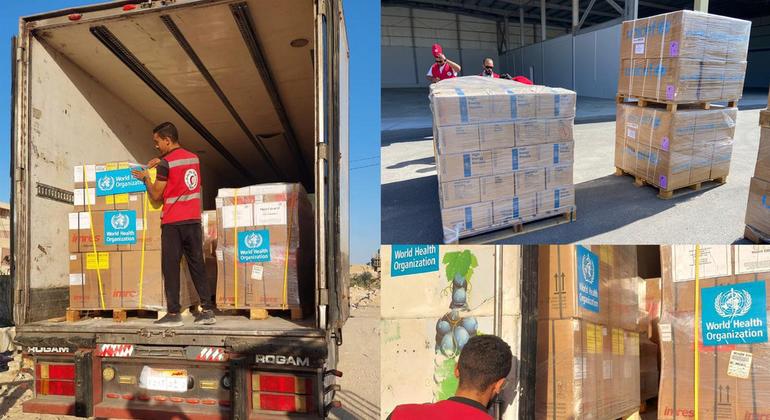UN News spoke with Elena Panova, UN Resident Coordinator in Egypt, and Neveen Alqabbaj, Vice-President of the Egyptian Red Crescent Society and Egypt’s Minister of Social Solidarity, about how thousands of tonnes of aid and lifesaving services get delivered in times of crisis.
Neveen Alqabbaj: The Egyptian Red Crescent Society was on top of the events in Gaza from the first day. We have more than 31 emergencies centres, 10 warehouses, 175 rescue teams, 36,000 emergency volunteers and trucks. We have highly equipped operations rooms that monitor the situation and coordinate with the Palestinian Red Crescent, so we have a real-time provision of data between the two.
We were getting ourselves ready in El Arish [where many international aid shipments arrive by air, about 50 km from the Rafah border into Gaza] and the surrounding governorates. We coordinate with local and international non-governmental organizations (NGOs) to ensure we have the goods.
Elena Panova: With the crises erupting in Gaza and Sudan, the UN team in Egypt, which consists of 27 UN agencies, had to refocus on scaling up our work. These crises forced us to rethink the way we operate because we are in emergency mode.
The UN in Egypt is working hand in hand with the Egyptian Red Crescent Society and has deployed a small humanitarian technical team to El Arish, including logisticians and those supporting aid coordination and information management.
The team works to helps the Red Crescent Society manage its warehouses in El Arish, the UN World Food Programme (WFP) provided extra mobile warehouses, and UN agencies donated trucks, forklifts, generators and pallets. Out of the more than 4,008 trucks that reached Gaza, around 35 per cent [contain] aid mobilized by the UN thanks to the generosity of donors.
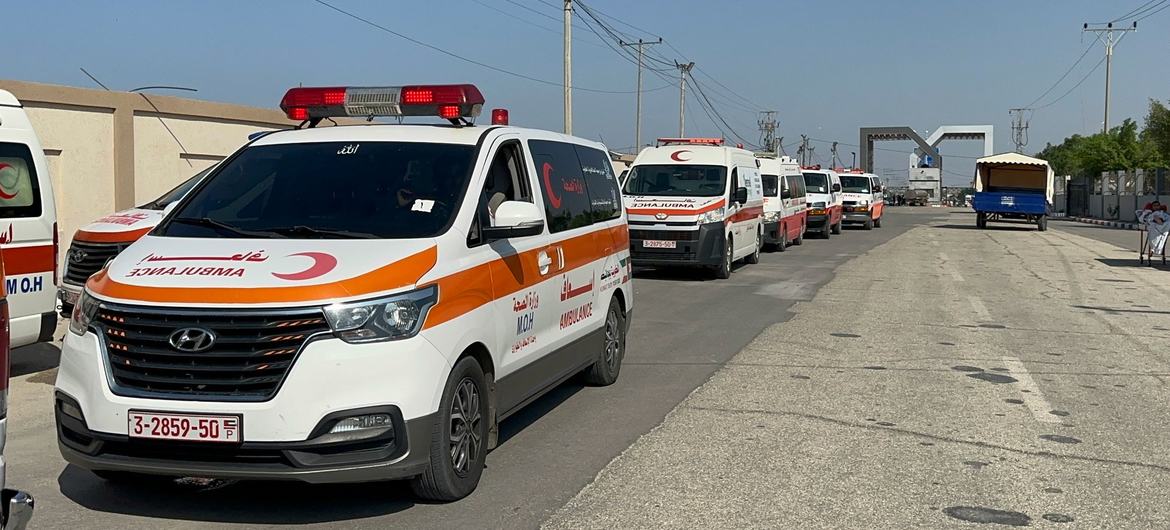
Injured Palestinians are taken in ambulances from Gaza through the Rafah crossing into Egypt.
UN News: What is the process of managing and opening the Rafah crossing and the restrictions you face, and what role does the UN in Egypt play in supporting aid deliveries?
Neveen Alqabbaj: We are ensuring that everything is channeled through the [Rafah border] gates, that we have a comprehensive vision and are responding as fast as possible. The Rafah crossing was the sole source of passing major aid into Gaza.
At the beginning, it was only 20 trucks a day, and then it increased gradually to these 200 trucks per day, although the need for the Palestinian people is around 500 to 600 trucks per day. This means that we’re reaching only 30 per cent of the actual needs.
We have problems in that we [face] so many demands on the Israeli authorities’ side. Each truck must travel about 50 kms from El Arish for inspection at Israel’s Nitzana border crossing, then go back to Rafah. As time passes, we now know the checklist that they need. We are also automating all the information and data that is provided through Rafah.
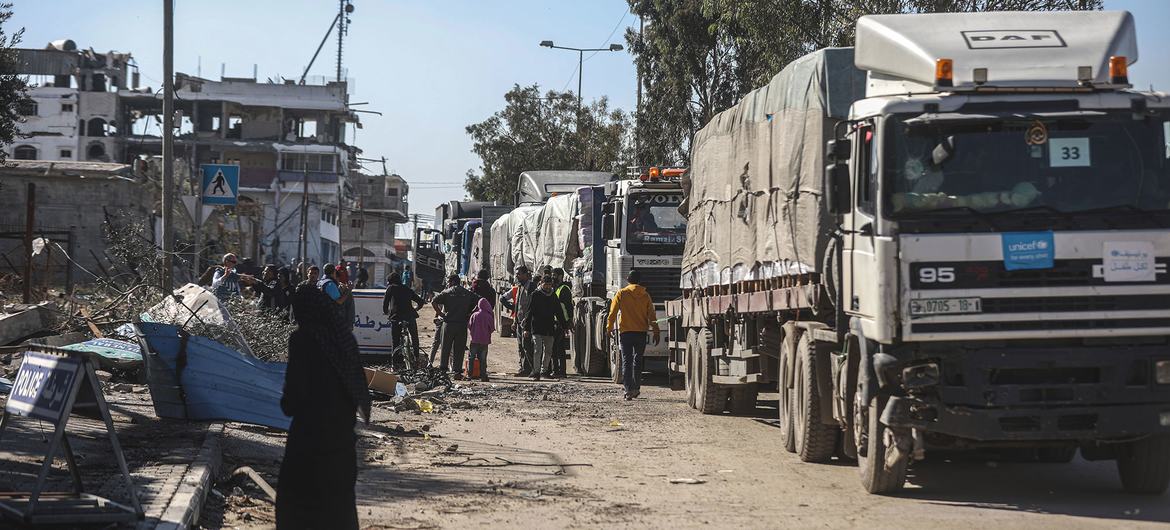
As part of an inter-agency convoy, the World Food Programme (WFP) picked up lifesaving aid at the Rafah crossing, delivering it to hard-to-reach areas in Gaza City during a pause in fighting in November. (file)
Elena Panova: It is indeed a very complex operation, and the complexity should absolutely not be underestimated. From the UN side, we try to focus on enhancing efficiency and predictability.
We want to make sure that whatever gets on these trucks is what is needed in Gaza. Prioritization is one of the areas where we support the Egyptian Red Crescent based on the information we get from colleagues from the other side of the border, mainly the UN agency for Palestine refugees (UNRWA) and the Palestinian Red Crescent Society.
One example of enhancing efficiency is coming up with a QR coding system for aid trucks. Anyone with a mobile phone can scan the code and see who is donating the aid, who is the recipient and what type of aid, which is extremely important for managing the transportation and transparency of aid delivered to Gaza.
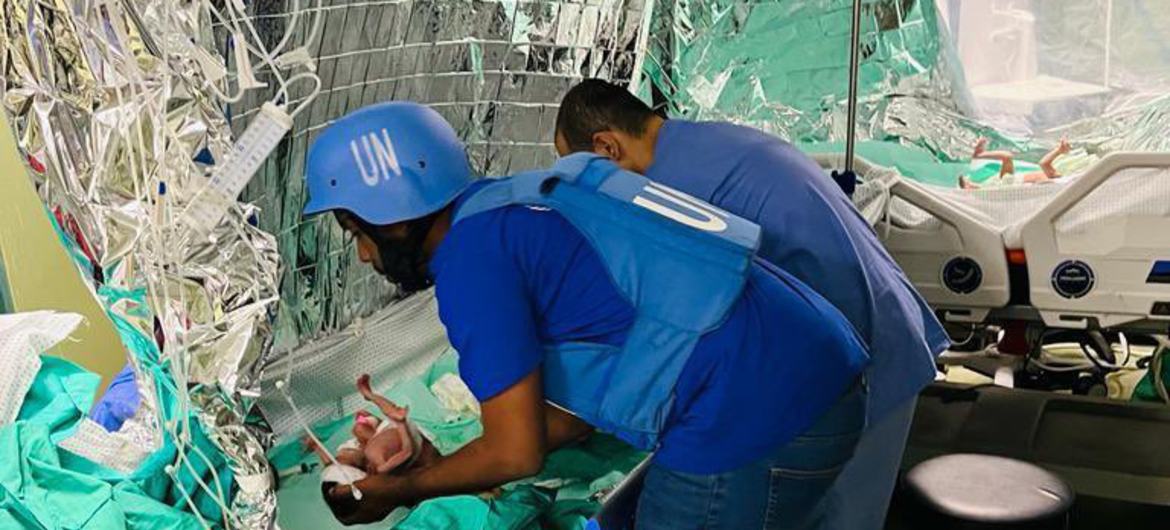
The World Health Organization (WHO) led a second UN and Palestine Red Crescent Society mission to Al-Shifa Hospital in Gaza in November. (file)
UN News: About the medical evacuations – including of several premature babies – that happened recently through the Rafah crossing, can you explain the process? What kind of support Egyptian authorities provide to the patients and the injured on the Egyptian side?
Neveen Alqabbaj: The Egyptian authorities, per the President’s guidance and recommendations, are to accept people in medical need or those with serious injuries. Around 10,000 injured persons are seeking medical support, 4,000 of them children. We have 38 hospitals ready in El Arish and the surrounding areas and in Cairo, and transportation has been provided through the Egyptian authorities and NGOs, especially for incubators, inhalers, anesthesia devices and other equipment.
The premature [babies] received in El Arish Hospital are not yet named and don’t have birth certificates. We’re doing the case management for each child. In Palestine, we have around 52,000 women who are pregnant, and we have about 183 deliveries per day. We also receive people here who have amputations and others who will be quadriplegic.
During the crisis, 90 per cent of Gazan hospitals have been completely out of order, around 250 medical workers were killed and there is a lack of equipment and many other supplies. We have serious injuries that need to be evacuated very soon.
Elena Panova: Our teams, specifically the World Health Organization (WHO) and the UN Children’s Fund (UNICEF), work very closely with the Ministry of Health and Population. They are the ones that lead the medical evacuations. All the teams help to enhance the capacities of the hospitals in Egypt that are receiving injured people from Gaza.
The UN in Egypt also has an important role when it comes to the rotation of essential humanitarian staff. We are facilitating people getting into Gaza. These are our UN colleagues, real heroes, and brave NGO staff that enter Gaza to support the teams there. So far, there have been more than 100 essential humanitarian staff that have entered Gaza.
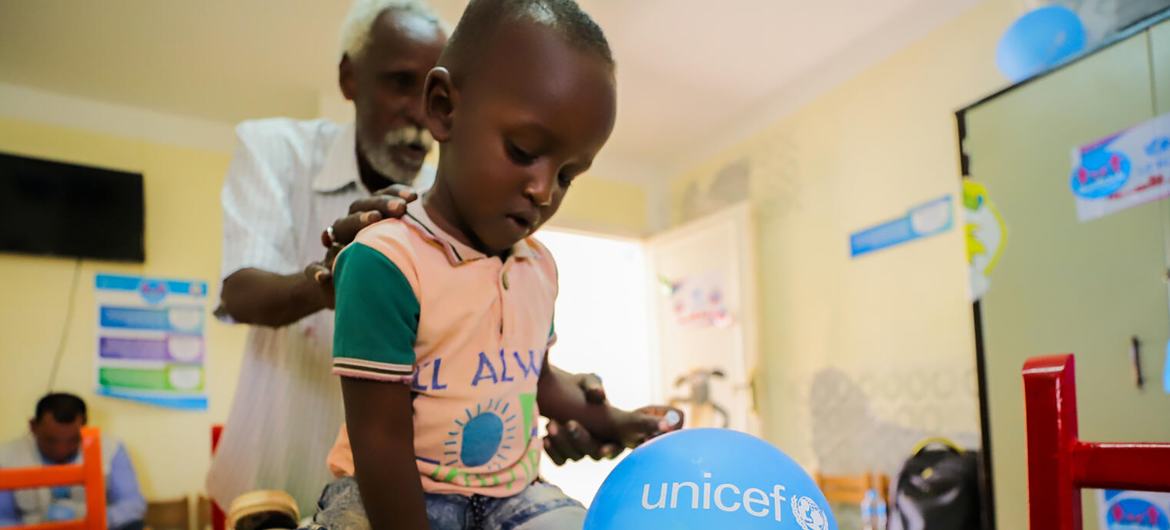
Local authorities in Aswan, Egypt, and UNICEF opened a child-friendly space to provide support to children and their families fleeing Sudan.
UN News: Moving to the crisis in Sudan, how many Sudanese refugees are in Egypt right now and what kind of support is being provided?
Neveen Alqabbaj: In general, 45 per cent of the nine million refugees in Egypt are Sudanese. In the latest crisis in Sudan, we received above 300,000 families. The Egyptian Red Crescent was there from the first early moments, helping people to cross the border safely and transporting them to the different locations in Egypt. Sudanese in Egypt are not clustered into camps, but they live throughout the country.
We established service centres at the entry points. We provide humanitarian relief services, hygiene kits, food and essential supplies, issue papers for those without identification, and psychosocial support for children and women.
Elena Panova: Soon after the first refugees started arriving here in Egypt, the UN Emergency Relief Coordinator, Martin Griffiths, allocated special funds from the Central Emergency Relief Fund (CERF) to our team to enable us to scale up the response quickly. On the route the migrants [are traveling], we installed water and sanitation facilities, mainly by UNICEF, simple things like toilets. WFP provided food, cash assistance to 270,000 of the new arrivals. The UN reproductive health and rights agency, UNFPA, and Egyptian partners established safe spaces for women, many of whom were fleeing sexual violence during the conflict.
Going forward, we have new arrivals, about 300 each day. We are going through the process of meeting their immediate needs. We also work closely with the Government to understand what the needs are for more long-term resilient support when it comes to livelihoods and specifically talking about education and health services. Support is definitely needed for the host communities, but also to the Government of Egypt to build its response to these mounting pressures.
Listen to the full interview here.
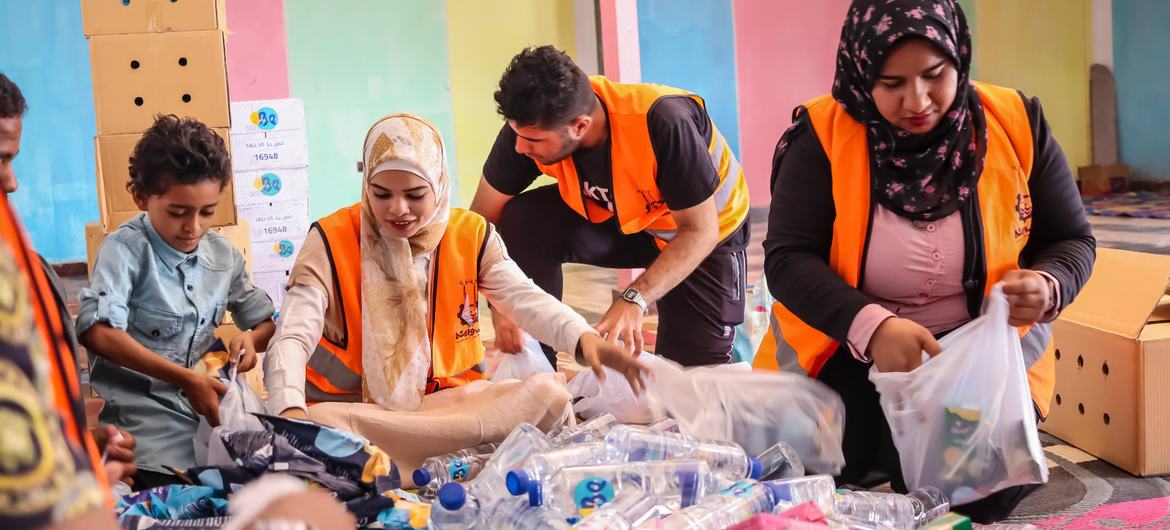
Young Egyptian volunteers help stranded Sudanese.

